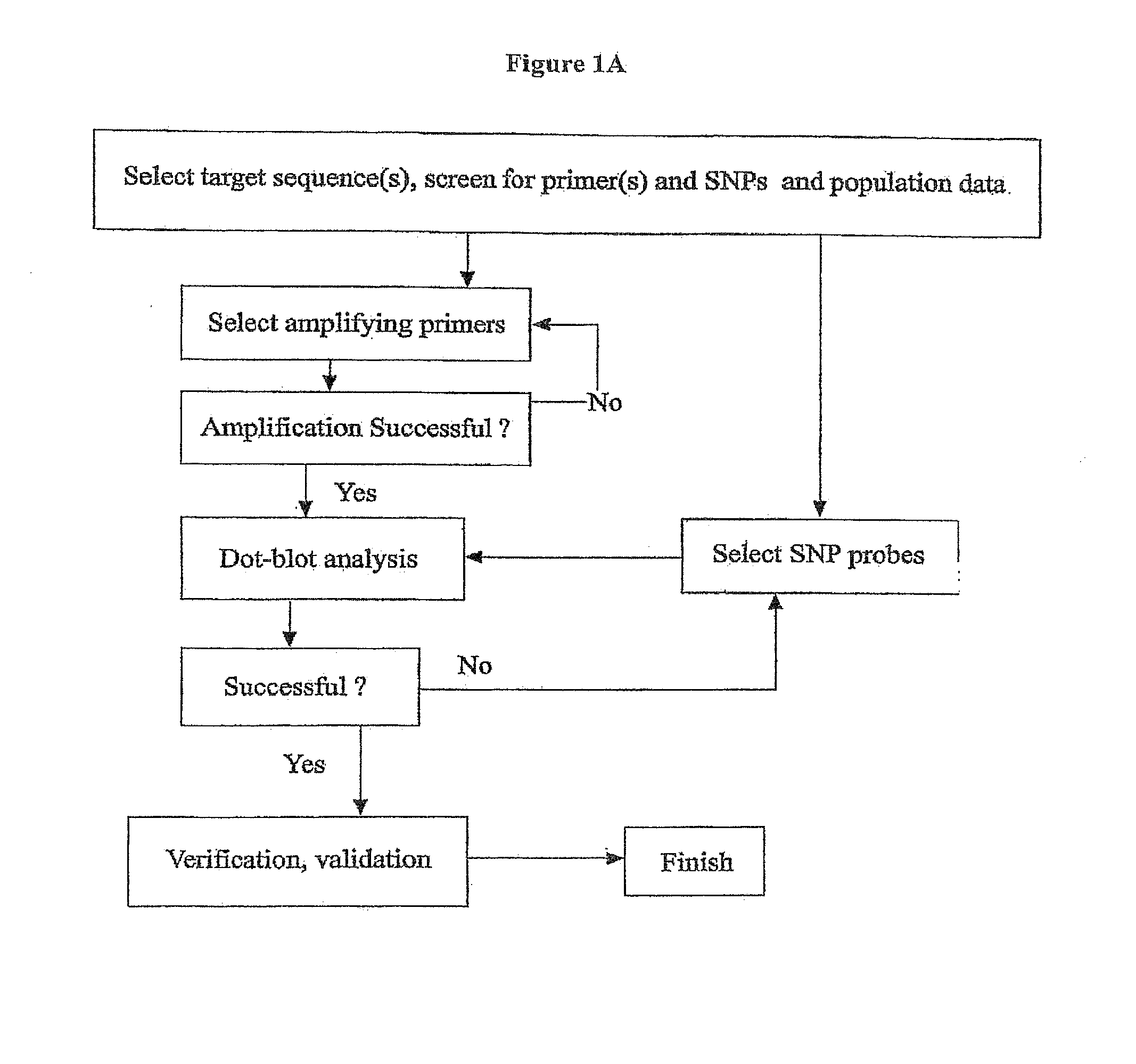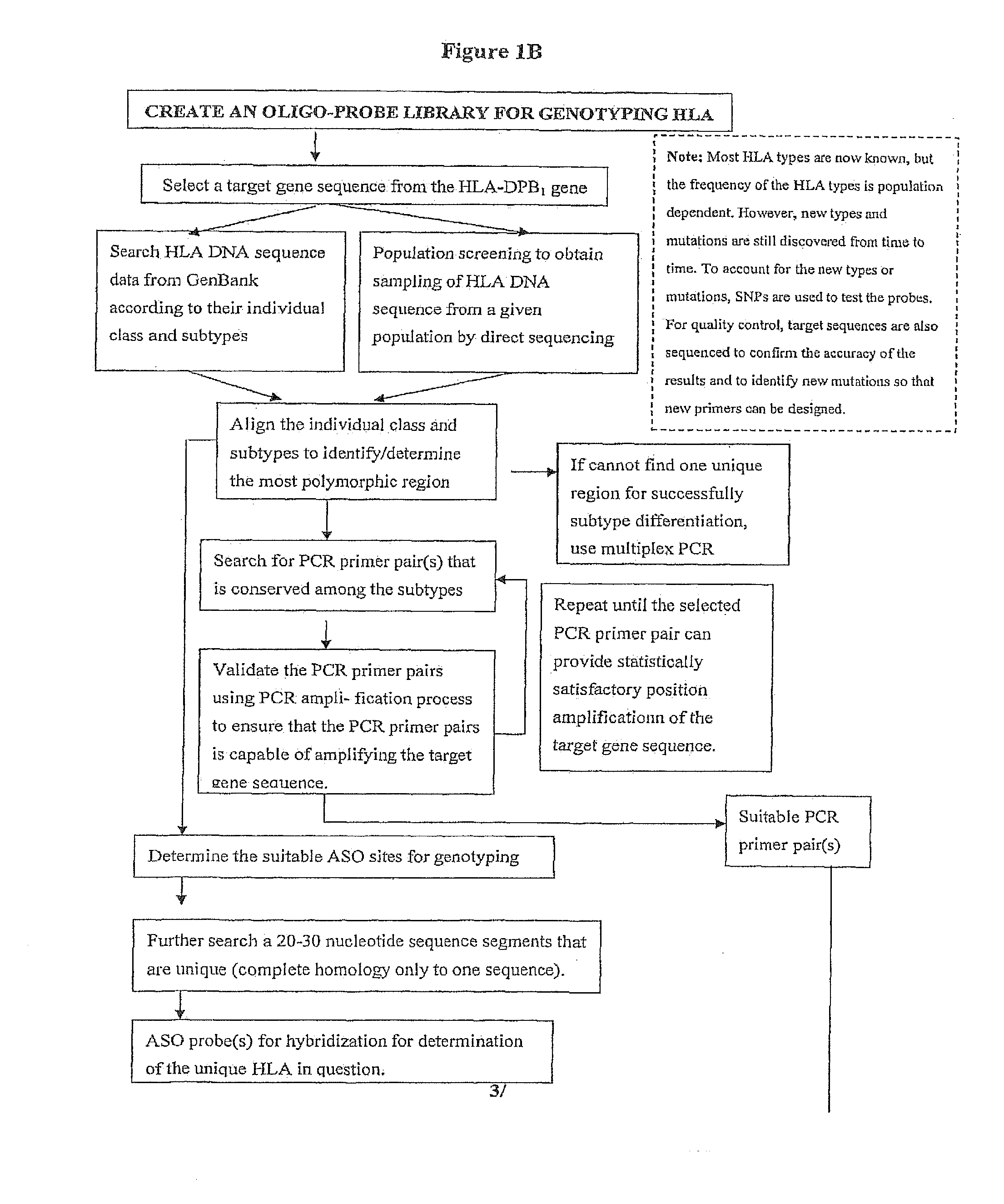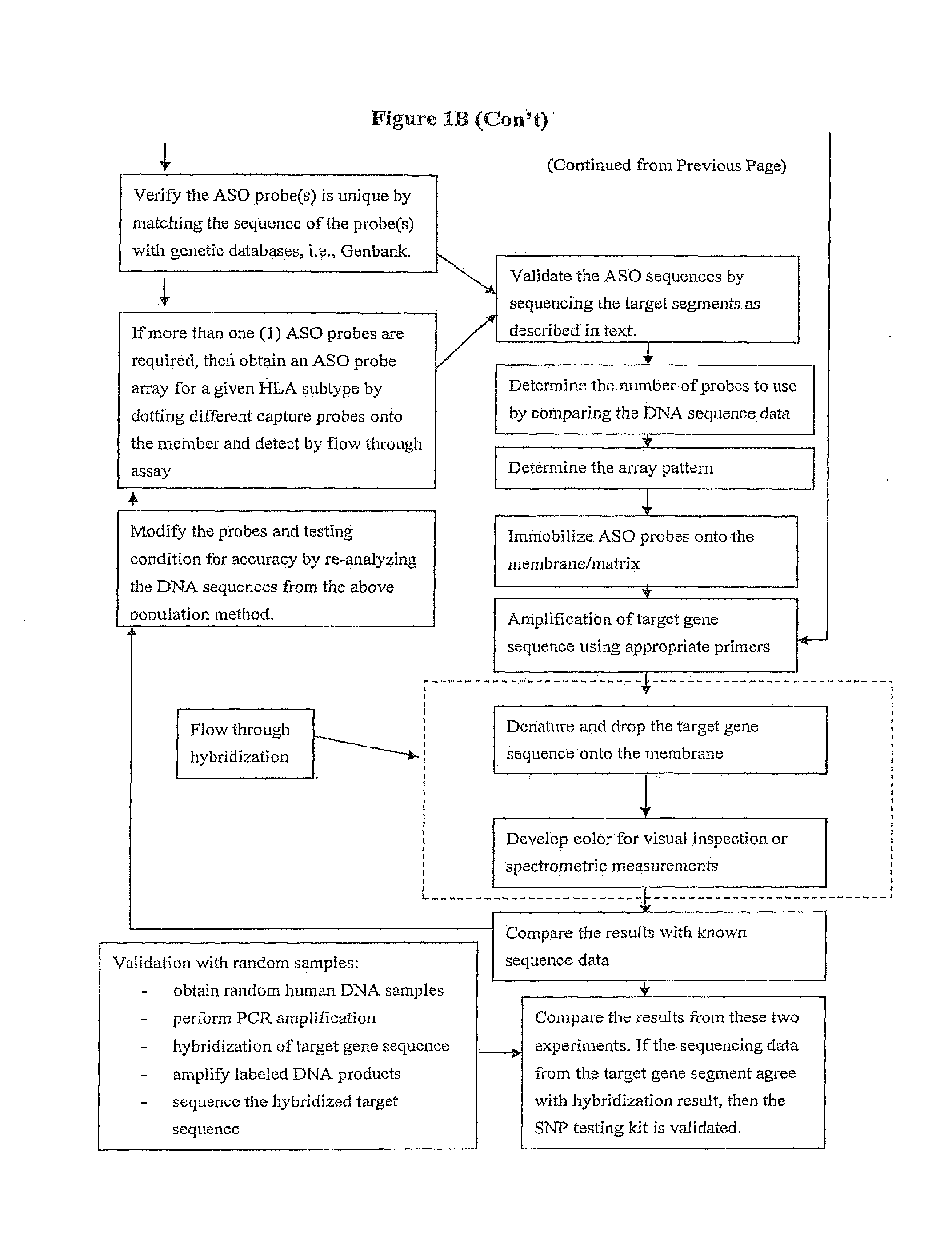Rapid Genotyping Analysis and the Method Thereof
a genotyping analysis and rapid technology, applied in combinational chemistry, biochemistry apparatus and processes, library screening, etc., can solve the problems of prone to errors, time-consuming and costly, and the accuracy of dna sequencing alone may prove more difficult and costly, and achieve faster and simpler, accurate genotyping, and cost-effective
- Summary
- Abstract
- Description
- Claims
- Application Information
AI Technical Summary
Benefits of technology
Problems solved by technology
Method used
Image
Examples
example 1
[0102]The following procedures were used to determine HLA genotypes of 140 human samples obtained from a sample Chinese population. The results were used to develop a kit for rapid classification of HLA subtypes of the first 2 digit codes corresponding to WHO nomenclature. In one embodiment, a kit can be designed to cover HLA-DR, -DQ and -DP alleles which are typically used for tissue matching between a donor and a recipient prior to organ transplantation.
A. Isolation of DNA
[0103]The following protocols are recommended, but alternative procedures which are readily apparent to one of ordinary skill in the art and which are equally effective may be employed. Nucleated cells such as WBC or tissues are washed with PBS, centrifuged, and the supernatant is removed. The pellet is re-suspended in 200.mu.l PBS. DNA extraction is performed with QIAamp DNA mini kit (QIAGEN) following Blood and Body Fluid Spin protocol as recommended by the manufacturer. Other commercially avail...
example 2
Simplified Genotyping Protocols and Devices
[0128]The flow-through DNA hybridization method and device as described in the U.S. Pat. Nos. 5,741,647 and 6,020,187, respectively, reduces hybridization time from many hours or days to minutes (the whole hybridization assay can be completed in 5-minutes depending the method used to generate detection signal). The device is also inexpensive to manufacture, and uses 10 times less reagents than convention hybridization devices which will lead to more affordable DNA diagnosis technology.
[0129]The present invention provides an inexpensive platform for studying the nucleic acids interactions using a low-density array format. This invention further provides a method of genotyping complex HLA systems. As illustrated above, the genotyping method of the present invention has been shown to provide significant improvements over conventional hybridization processes, even the hybridization process as described in U.S. Pat. Nos. 5,741,647 and 6,020,187....
example 3
[0133]To identify the DRB genotypes, the PCR were carried out with the primer pair of DRB-F1: 5′-ATCCTTCGTGTCCCCACAGCACG-3′ (SEQ ID No. 97) and DRB-R1: 5′-GCCGCTGCACTGTGAAGCTCTC-3′ (SEQ ID No. 98) and a 29 ASO probes (as listed in FIGS. 6A-B) were tested of which 18 were found to be best for the identification of the HLA-DRB alleles.
[0134]In the case of DQB1 genotypes, PCR is carried out using DQB-E2-F2: 5′-CGGTGATTCCCCGCAGAGGAT-3′ (SEQ ID No. 99) and DQB-E2-R2: 5′-CCACCTCGTAGTTGTGTCTGC-3′ (SEQ ID No. 100) as primers (see FIG. 6D) which are able to generate a 260 bp. The 24 SSO probes are used as capture probes for this DQB1 classification during hybridization.
[0135]To identify DPB1 genotypes, a total of 43 ASO probes were tested of which a set of 35 SSO Probes are shown in FIG. 6E as examples. In order to amplify a target gene or sequence to a detectable level for hybridization, multiplex PCR amplifications are carried out with a set of primers as shown in FIG. 6F. Pr...
PUM
| Property | Measurement | Unit |
|---|---|---|
| temperature | aaaaa | aaaaa |
| fluorescent | aaaaa | aaaaa |
| color | aaaaa | aaaaa |
Abstract
Description
Claims
Application Information
 Login to View More
Login to View More - R&D
- Intellectual Property
- Life Sciences
- Materials
- Tech Scout
- Unparalleled Data Quality
- Higher Quality Content
- 60% Fewer Hallucinations
Browse by: Latest US Patents, China's latest patents, Technical Efficacy Thesaurus, Application Domain, Technology Topic, Popular Technical Reports.
© 2025 PatSnap. All rights reserved.Legal|Privacy policy|Modern Slavery Act Transparency Statement|Sitemap|About US| Contact US: help@patsnap.com



